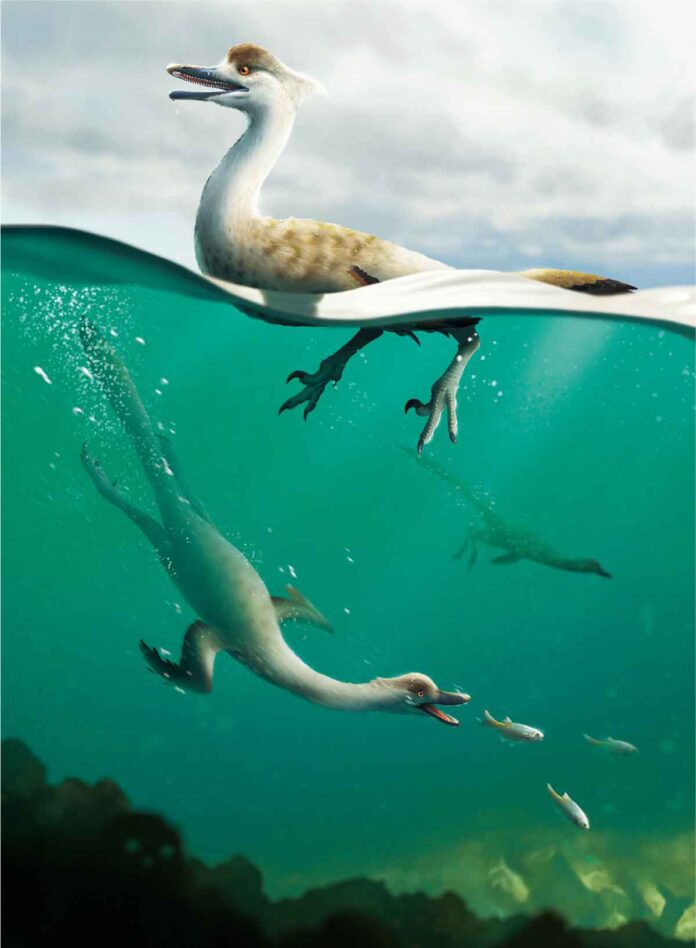In Mongolia, scientists discovered a new predatory dinosaur fossil. It was most likely a semi-aquatic diving predator.
A near-complete skeleton has been discovered in Omnogovi Province. It was named “Natovenator polydontus,” or “Swimming hunter with many teeth.” This is according to a paper published in Communications Biology on Thursday.
The dinosaur was discovered in 2008. It was a part of the Korean-Mongolian International Dinosaur Expedition at the Hermiin Tsav fossil formation in Mongolia. Since then, it has been stored alongside hundreds of other fossils awaiting expert examination.
The researchers discovered the fossil to be well-preserved and nearly complete. It has most of its two hindlimbs, one of its forelimbs, most of its skull, and most of its spinal column. It also had a slew of teeth. The skeleton was sleek and trim, like many modern water birds. It implies that it lived on or near the water and survived by fishing offshore.
The researchers also noticed that its ribs pointed toward its tail. This is a characteristic shared by many waterbirds. But it wasn’t an avian because there were no wings to be seen. The researchers also noted that the overall shape of the skeleton strongly suggested that it did not walk with its forelimbs. This gave it a penguin-like gait.
Their findings indicate that the dinosaur belonged to the therapod family. It had not previously been identified. Thus, it represented a new species. They named it Natovenator polydontus. It roughly translates to “swimming hunter with a lot of teeth.” They believe it was most similar to Halszkaraptor. It is another non-avian dinosaur that lived in what is now Mongolia.
The dinosaur was discovered in an Upper Cretaceous rock formation, which dates from 100 million to 66 million years ago. The researchers believe it adapted to a semiaquatic lifestyle similar to that of modern water birds. Though its large number of teeth indicate a more varied diet.

